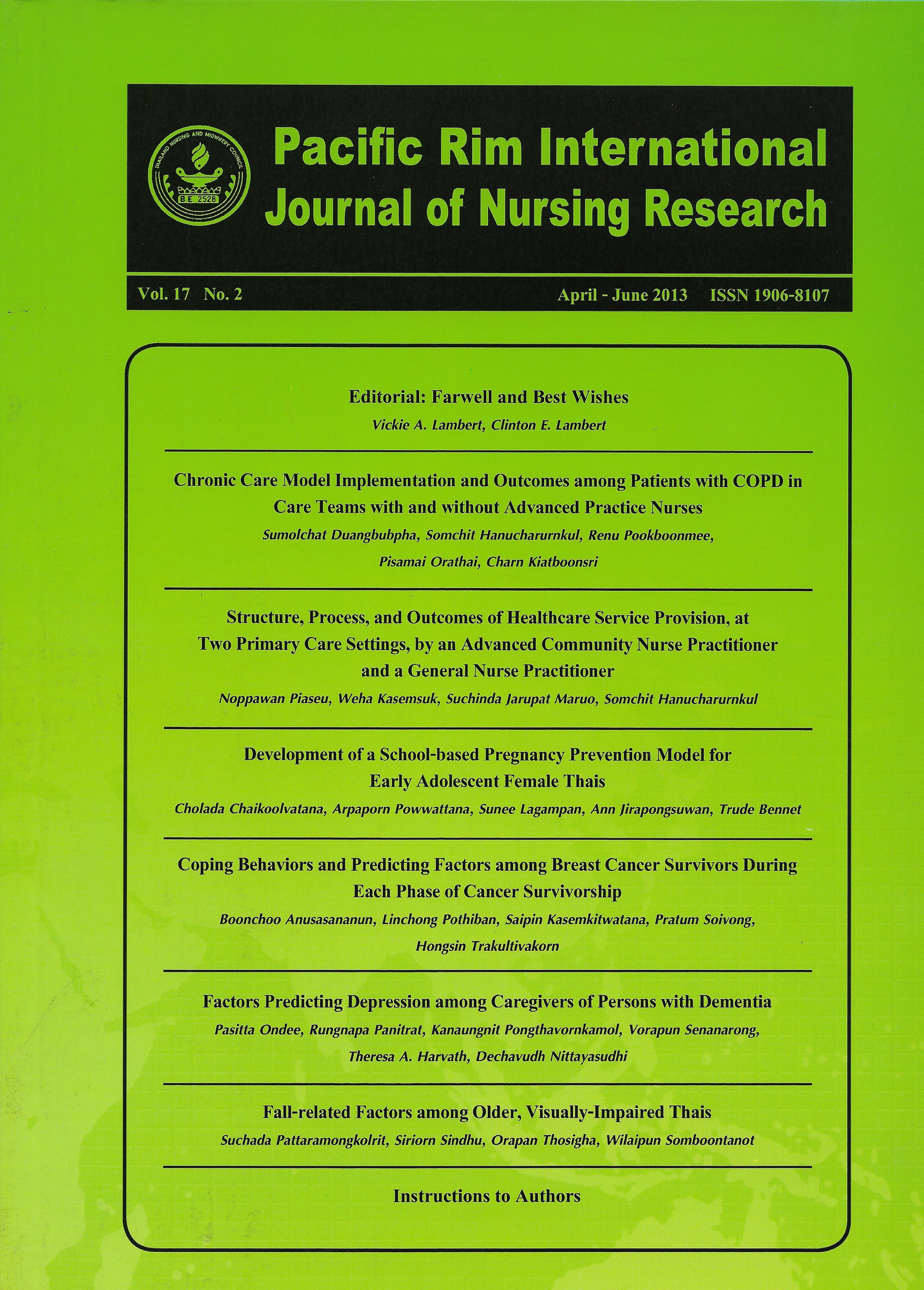Development of a School-based Pregnancy Prevention Model for Early Adolescent Female Thais
Keywords:
Teenage pregnancy, Sexual risk behavior, Model developmentAbstract
This participative action research sought to develop, for early adolescent female Thais, a school-based pregnancy prevention model that included the perspectives of adolescents, family members, school system members, and community members (i.e., health personnel and community leaders) in a province in northern Thailand. A participative action research design was implemented, using quantitative and qualitative data gathering approaches, via a three-phase plan (i.e., situational analysis, model development, and model reflection). In the first phase, 154 female students in secondary-school grades seven and eight, and 115 mothers/female guardians were assessed, using Problem Behavior Theory as a guide, about factors that influence sexual risk behavior. Data were obtained via self-administered questionnaires. During the second phase of the study, 14 focus groups and 15 in-depth interviews were conducted, with 20 of the adolescent subjects, 13 of the adolescents’ mothers/guardians, and 69 key stakeholders for the purposes of obtaining additional data and developing a provisional teenage-pregnancy prevention model. The third and final phase involved model reflection, with 34 participants, selected from the first two phases of the study (i.e., seven female adolescent subjects, six male adolescent peers, eight mothers/guardians, two teachers, two health personnel, and nine community leaders), to ensure the model was designed to address the pregnancy prevention needs of early adolescent female Thais. Qualitative data were assessed via content analysis, while descriptive statistics, Pearson’s correlation coefficient and stepwise multiple regression were used to analyze the quantitative data.
The final version of the School-based Teenage Pregnancy Prevention Model was composed of four main parts (i.e., individual, family, school, and community) with nine essential components, including: promote family relationships; promote family communication; promote family roles; establish peer leaders; provide sex education; encourage moral principles; promote recreational interests; create school-family-community networks; and, provide sexual reproductive health services. Actions among and between the four main parts consisted of: sharing information; supporting and involving; sharing environment; supporting and promoting; and collaboration.
The key concepts of the model demonstrate the need for ownership and involvement of the family, school, individual, and community in dealing with development of programs that address teenage pregnancy. In addition, the findings provide an increased understanding of sexual risk behavior of early adolescent female Thais.
Downloads
Published
How to Cite
Issue
Section
License
Copyright: The Pacific Rim International Journal of Nursing Research, Thailand Nursing & Midwifery Council has exclusive rights to publish, reproduce and distribute the manuscript and all contents therein.








.png)



